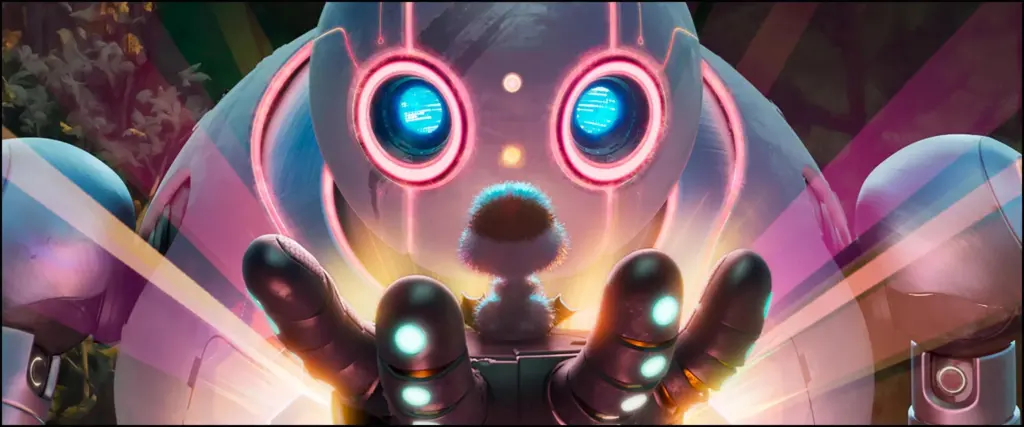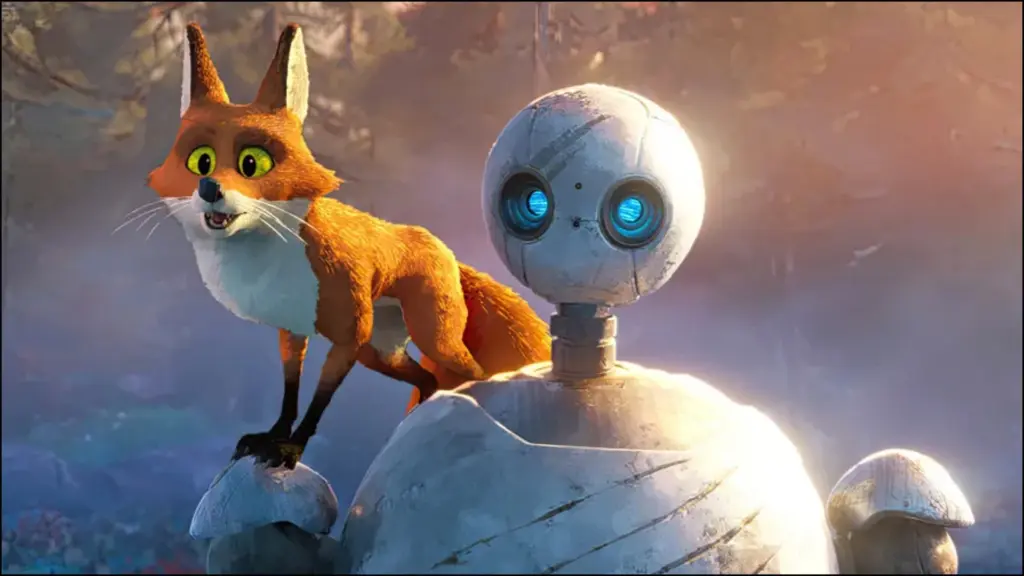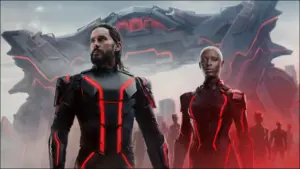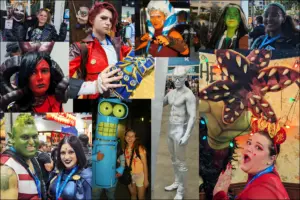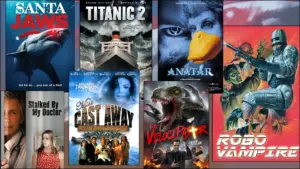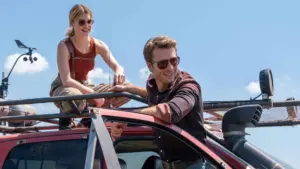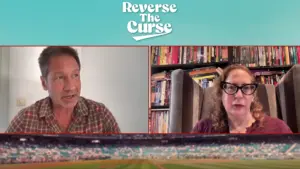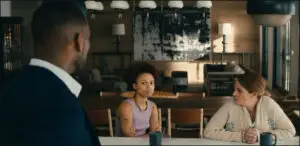The Wild Robot is an animated science fiction movie for families about an artificially intelligent helper robot that gets shipwrecked on an uninhabited island. Isolated from the human civilization it was designed to serve, the robot “Roz,” short for ROZZUM 7134, seems to have no purpose until it accidentally kills an entire family of geese — with the exception of the “runt,” Brightbill. The newly hatched gosling imprints on Roz, taking the robot for his mother, and Roz in turn takes it as “her” task to teach Brightbill how to fly in preparation for his winter migration south.
This brief summary gets at some of the tonal and thematic paradoxes in The Wild Robot. The death of Brightbill’s family is a good example of how the film matter-of-factly acknowledges the casual horror of nature in which predation and death are unremarkable daily occurrences. When Roz adops Brightbill, the film shifts to facile sentimentality, jerking as many tears as it can from the story of an orphan being raised by a single mother. This tension between cold realism and utopian idealism recurs throughout the film. And, of course, there’s something dodgy in the way Roz is gendered as female, while also being a literal machine designed for domestic labor.
Animator Chris Sanders, known for his work on Lilo & Stitch and the first How to Train Your Dragon, adapted The Wild Robot from the best-selling children’s book by Peter Brown. It was apparently a difficult novel to adapt, because Sanders ended up with two narrative threads uneasily tangled together.
That first narrative follows the lost robot as it adapts to its wilderness environment, learning to communicate with the animals, build shelter, and rewrite its own programming until its manufacturer can find it and retrieve it. The second narrative is a humanistic story in which Roz has become the mother of Brightbill and must raise and learn to love the young gosling, despite being utterly unprepared for such a task and constitutionally unfit for emotional connection.
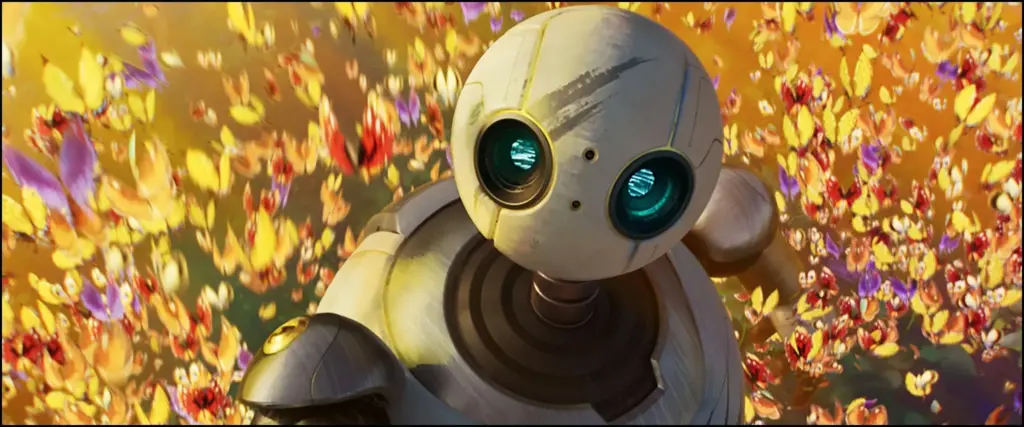
This second story operates with the standard plot and parenting subtext we’re used to in family movies, from Finding Nemo to Inside Out, where a caregiver learns to let their child grow up. Theoretically these movies can speak to parents of any gender, but The Wild Robot seems to fall into the trap of imagining mothers as perfectly nurturing and without an identity apart from their children — for whom they must sacrifice everything.
There is obviously a lot of overlap between the lost robot story and the unprepared parent story, especially at the start of the film, but the stories gradually diverge as Brightbill grows up. By the completely unnecessary action sequence in the third act, the two stories seem to have almost nothing to do with each other. A better movie might have skipped the noisy climax altogether and carved out more time for the quiet moments of beauty and tenderness in the first third of the film. You know, the parts about a wild robot.
That sci-fi story was admittedly interesting, if under-developed. Conceptually The Wild Robot is fundamentally the story of an A.I. robot, an artificial being, leaning to be more natural, to integrate into the wild, uncivilized world and to use its innate nurturing impulse to create diverse communities. It’s the story of an outsider, uncommitted to the various sides in nature’s war of all against all. She takes care of a weak child who would have died without her intervention, and who later negotiates a truce among the predators and prey so they can all survive the winter. But instead of exploring the subtler themes of nature and violence, The Wild Robot focuses on the obvious metaphor of parenthood.
It’s a logical choice for a would-be blockbuster movie. Yet Sanders struggles with tone and pacing. He seems to be aiming for Wall-E or The Iron Giant territory, but those are clearly children’s movies. It’s unclear to me who the audience for The Wild Robot is. The plot and emotional resonance are all aimed directly at parents and not much at all toward children. The children in my theater were restless.
For me the animation is beautiful, made to look more like moving paintings than the hard edged, glossy “realism” of Pixar, closer to the Spider-Verse films. And there’s some nice dark humor, often relating to the film’s deadpan approach to nature and the violence inherent in it. Plus the voice acting is excellent, especially Lupita Nyong’o (Us and A Quiet Place: Day One) as Roz. She starts with a very stiff, emotionless tone and gradually introduces more looseness and warmth into her voice as Roz learns to be a mother.
The Wild Robot is not a bad movie, especially for a kids’ cartoon. It’s certainly better than Despicable Panda 4 or whatever other slop is being pumped into theaters right now. The trailers promise a movie from the director of How to Train Your Dragon, but that was co-directed by Dean DeBlois. What you get here is from a director working at the level of The Croods. It’s not as good as the best from Pixar or Studio Ghibli, though that’s true of most animated films. If you’re taking your kids to the theater, there are far worse things you might have to sit through.
